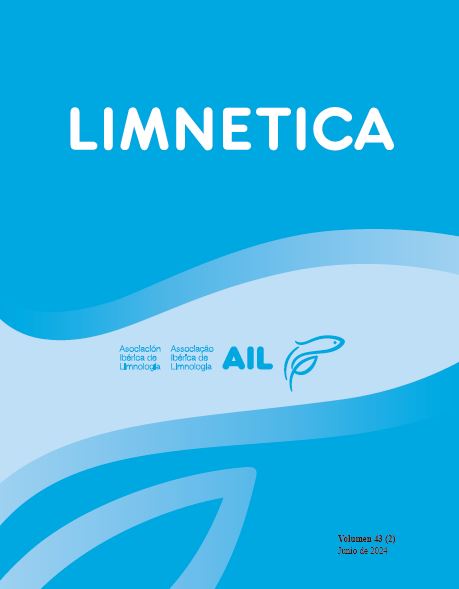Microplastics in water, sediments and macroinvertebrates in a small river of NW Spain
Resumen
Microplastics (MPs; plastic particles < 5 mm in size) are very common nowadays and ubiquitous in the environment and can cause harm to aquatic organisms. Around 300 million metric tonnes of plastic are manufactured each year and they are regularly mismanaged. Therefore, MPs are frequently found in the environment. Anthropogenic activity in urban areas is considered one
of the major sources of MPs. In view of this, we hypothesized, that MPs are present in all areas of rivers, even in riverheads. We analyzed macroinvertebrates in an urban river for MPs and discuss their potential environmental impact. We collected water samples from the centre of the river and filtered the water. Additionally, we collected sediment samples from the the bottom (S1 and S2, both samples collected specifically for sediments analysis) and from the benthic sediment (S3, sample collected for macroinvertebrates identification) from which macroinvertebrates were sampled for MP analysis and for taxonomic identification in order to estimate the water quality of the river, following the protocol for calculating the IBMWP (MAGRAMA, 2011). Sampling took place in the Gafos River (NW Spain) during summer 2020 at three different sampling sites at the head of the river called upstream (G1), in the middle part of the river and upstream of a town (G2) and in the downstream area before the river mouth in the Atlantic Ocean (G3). Different microplastic fibres and particles were found in all water samples (G1, G2 and G3) and in some of the sediment samples. Analysis of the different types of microplastics was carried out by Fourier-transform infrared spectroscopy in attenuated total reflectance mode (ATR- FTIR). The majority of microplastics in water, sediment and biota consisted of polyvinyl chloride (PVC) and polyethylene terephthalate (PET) and the abundances of MPs were very similar. We found more MP particles in biota and water (35 pieces in each compartment) than in sediments (28). Microplastics were found in the cases of Trichoptera families like Lepidostomatidae and Limnephilidae, and inside the body of some Odonata families such as Gomphidae. This confirms the presence of MPs in aquatic organisms and in habitats of an urban river in Spain. Since MPs have been found in freshwater habitats globally, future studies should analyse which macroinvertebrates could be used as MP bioindicators.
Descargas
Publicado
Número
Sección
Licencia
Los autores que publican en esta revista están de acuerdo con los siguientes términos:
- Limnetica está bajo una licencia de Creative Commons Atribución-NoComercial 4.0 Internacional.
b. Los autores pueden establecer por separado acuerdos adicionales para la distribución no exclusiva de la versión de la obra publicada en la revista (por ejemplo, situarlo en un repositorio institucional o publicarlo en un libro), con un reconocimiento de su publicación inicial en esta revista.
c. Se permite y se anima a los autores a difundir sus trabajos electrónicamente (por ejemplo, en repositorios institucionales o en su propio sitio web) antes y durante el proceso de envío, ya que puede dar lugar a intercambios productivos, así como a una citación más temprana y mayor de los trabajos publicados (Véase The Effect of Open Access) (en inglés).


